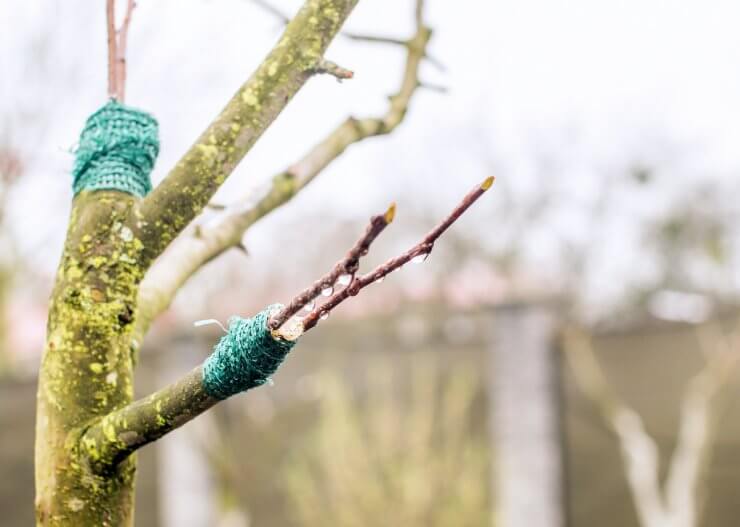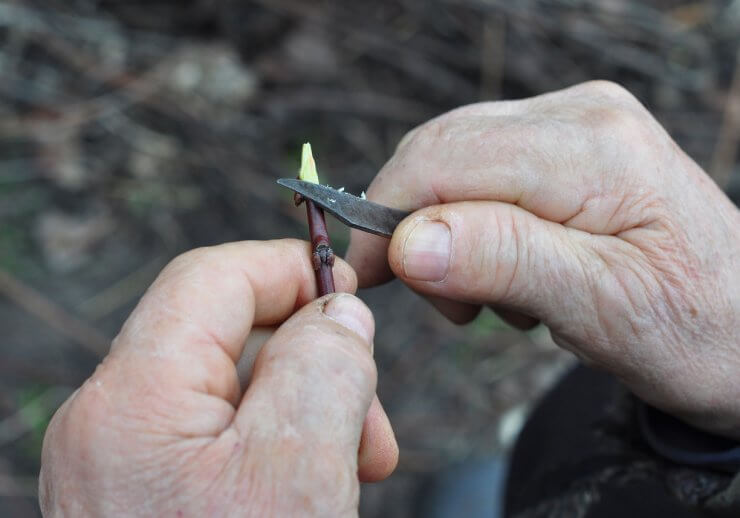
Before I get into all the reasons grafted fruit trees are a good option for your garden, I’d like to talk about comic books. In the late 1970s, DC Comics introduced a high school student, Ronnie Raymond, and a decorated physicist, Dr. Martin Stein. During a nuclear accident, the two became fused, creating the powerful metahuman, Firestorm.
Thanks to this merge, Firestorm had the athletic abilities and energy of a young high school student, as well as the intellect and wisdom of a respected scientist. Among other things, Firestorm was a staunch environmentalist, making him perfect for explaining grafted fruit trees.
Like Firestorm, two fruit trees together can become a productive and robust part of our community. They can add variety to your garden and attract more pollinators, and, of course, there’s the benefit of an endless supply of fresh fruit right in your backyard.
Explore the easiest fruit to grow at home—indoors or out! Read our FREEBIE 15 Easiest Fruits to Grow at Home, right now!
The details and definitions of grafting
Let’s start with the why. Unlike many of your vegetables, growing fruit trees from seeds will not necessarily give you the fruit you want. The seeds from an heirloom Cherokee Purple tomato will always give you that rich, full tomato you expect.
Fruit trees, on the other hand, are a bit of a crapshoot. Because most fruit trees are pollinated from other nearby fruit trees, the seeds contain the genetic information of generations of trees. In short, that means your beautiful apples may give you seeds that produce trees that don’t bear fruit or that bear some version of fruit that’s nothing like what you were hoping for. Plus, it’s kind of fun to graft fruit trees. Just a word of encouragement, this might sound complicated, but it’s actually very easy.
Grafted fruit trees consist of two parts: the rootstock and the scion. The rootstock is, quite literally, a bundle of roots. Although sometimes the rootstock may include part of an older tree trunk and even some branches in some cases. Going with our Firestorm analogy, essentially, the rootstock is the Professor Stein of the pair. It informs things like the tree’s height, how much fruit it produces, when it bears fruit, and other similar characteristics.
The scion looks like a stick. It is the top part of the combination that will eventually turn into the leaves, fruit, etc. It is the Ronnie Raymond part of the plant. For instance, if you want a Macintosh apple, you would use a scion from a Macintosh apple tree.
As for fusing the two, the rootstock and scion should be from similar trees, but they don’t necessarily have to be from the same type of tree. You could graft a Macintosh scion to the rootstock of an Empire apple, and you would get Macintosh apples. Apples to apples, as they say.

How to graft your fruit trees
The easy way to start is to buy your rootstock and scion at a local gardening shop or nursery. That way, you can be sure you’re getting a healthy start. Plus, you can probably talk to an expert who could give you helpful information about how to care for your particular grafted fruit trees.
Spring is usually an ideal time to graft your rootstock and scion since that’s when the sap will be running. To prepare your scion, clip about an inch off the bottom and top to ensure any dead wood is removed, leaving at least three or four good buds. Then with buds pointing up, cut the bottom of the scion into a wedge.
To prepare the rootstock, slowly cut a slice down the center of the branch. Then insert the scion into the rootstock. You’ll need to seal the graft so it can heal and start to grow. As it happens, you can buy tape specifically for this. Grafting tape helps seal in moisture, keep out infection, and will disintegrate over time. It’s also helpful to melt a little bit of wax on the other end of your scion to keep it from drying out.

The tastiest part of grafted fruit trees
Okay, here’s the really fun part. Because the scion is the part of the tree that determines what kind of fruit you get, you can actually graft multiple different varieties to one rootstock if it’s large enough. So you could have one tree that bears both early and late-season fruit. You could even combine fruits, such as stone fruits like plums and peaches, on one tree.
There are some advantages and disadvantages to this. For pollination purposes, you usually need at least two different trees. But with essentially a two-for-one tree, you can get that pollination without additional trees. From an aesthetic standpoint, it looks pretty darn cool to have different fruits (or varieties of fruits) on one tree.
The disadvantage is that the more varieties you introduce onto one rootstock, the more potential variables you add that could cause problems. Not to say it can’t be done, of course. If you need proof, check out this Frankenstein tree with 40 different fruits!
I kid you not. This tree, conceived as an art project by Syracuse University professor Sam Van Aken, bears stone fruits, including cherries, nectarines, peaches, plums, and almonds.
I’m not sure that’s a project I want to take on, but it is fascinating. In the meantime, I’ll stick to just one or two varieties.
Have you tried grafting fruit trees? I’d love to hear about your experience or any tips you might have.
Explore the easiest fruit to grow at home—indoors or out! Read our FREEBIE 15 Easiest Fruits to Grow at Home, right now!





Great article on grafting trees. After grafting do you plant the tree in the ground or in a container for root establishment? I have one Mulberry tree that bears fruit and I want to graft it, it has been on my property for many years.